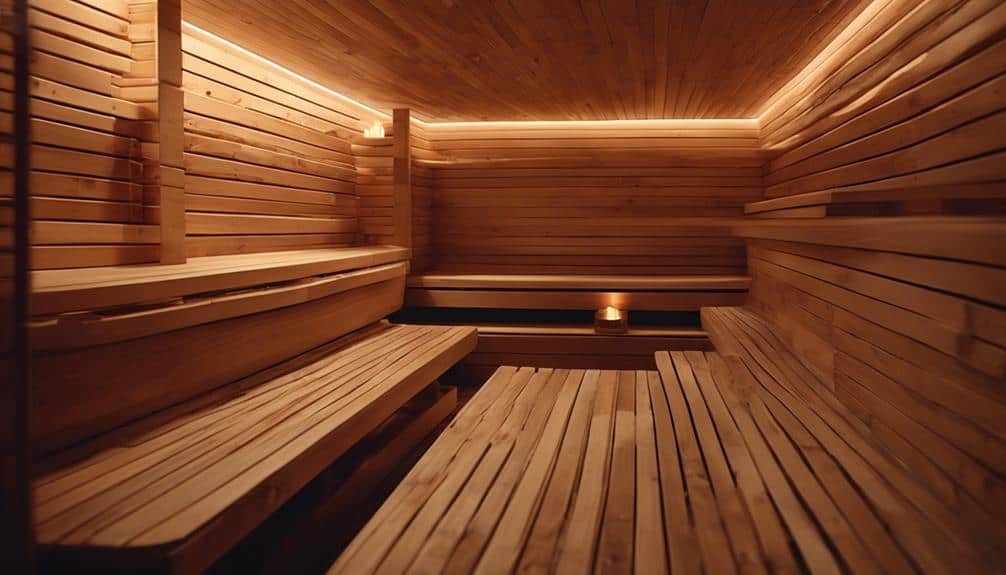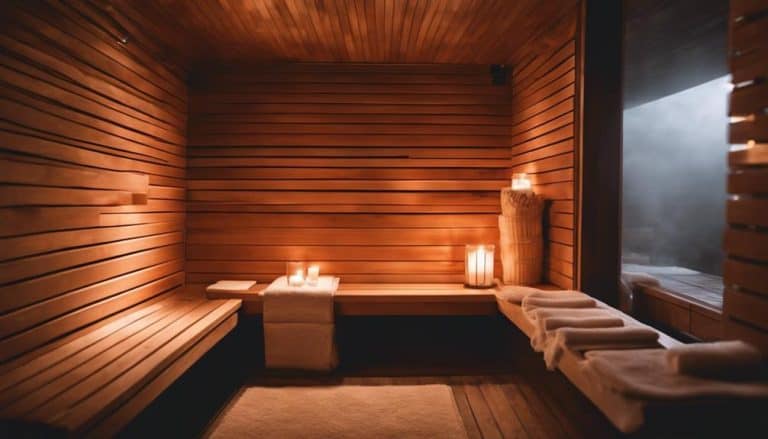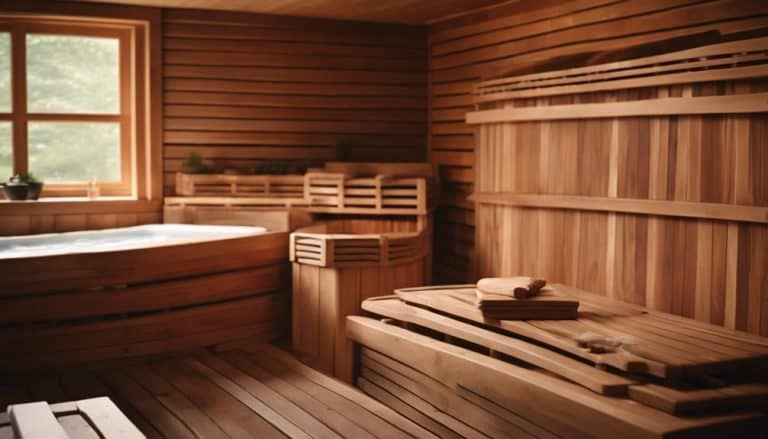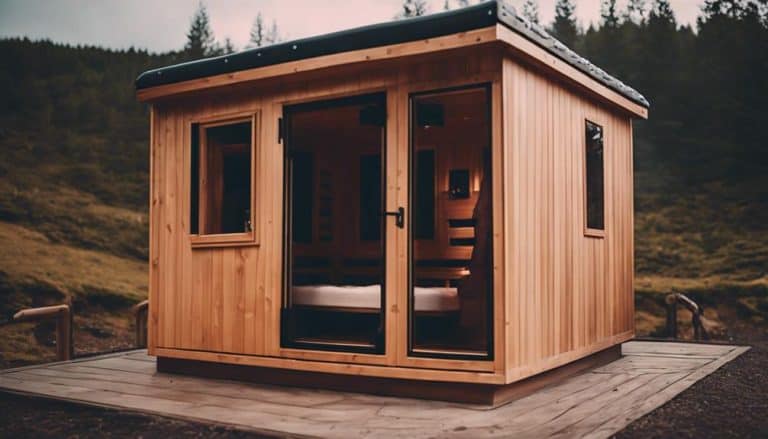What Factors to Consider When Selecting a Sauna?
When it comes to selecting a sauna, the number of factors to consider can feel overwhelming. From the type of sauna to the materials used and the additional features available, there are countless decisions to be made.
But fear not, as I'm here to guide you through this sauna-selection journey. So, let's dive in and explore the essential factors that will help you create the perfect sauna experience.
Key Takeaways
- Consider the size and space requirements of the sauna, including the number of users and available installation space.
- Choose between traditional or infrared saunas based on heating methods and desired therapeutic benefits.
- Select durable materials like cedar or hemlock that resist heat and moisture, while also considering sustainability and safety standards.
- Explore additional features and accessories like infrared technology, chromotherapy, and halotherapy to enhance the sauna experience.
Size and Space Requirements
When considering the size and space requirements of a sauna, it's important to take into account the number of users and the available area for installation. Sauna sizes range from 1-person to 6-person options, allowing you to choose the right size based on your needs. It's crucial to provide enough bench space for each person in the sauna to ensure their comfort and relaxation. A general rule of thumb is to allow at least 50cm of bench space per person. Additionally, consider the number of users to ensure everyone can enjoy the sauna experience without feeling cramped.
Sauna placement is another key factor to consider. You should assess the space availability in your home and choose the ideal location for installation. It's important to ensure proper wiring for a safe and efficient sauna operation. Avoid carpeted floors in the sauna area to prevent any potential fire hazards. Ideal locations for saunas include master bathrooms, fitness rooms, and basements. These locations offer convenience and privacy, enhancing your overall sauna experience.
Heating Method
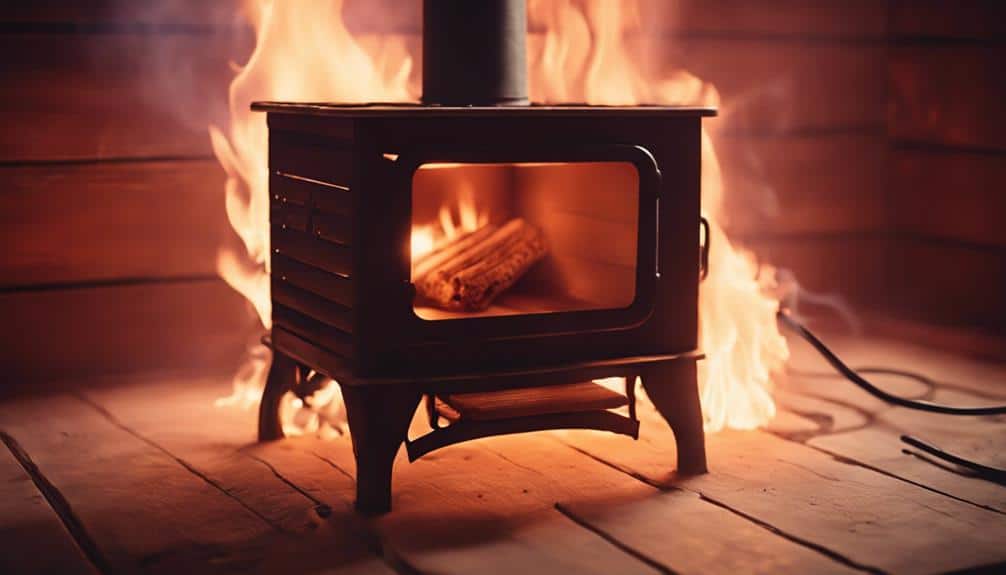
There are two primary heating methods to consider when selecting a sauna: traditional and infrared. Each method offers its own unique benefits and considerations. Here are three key factors to keep in mind when choosing a heating method for your sauna:
- Heat Delivery: Traditional saunas heat the air in the sauna environment using a traditional stove or electric heater. This creates a high-temperature environment, typically ranging from 150-185°F. In contrast, infrared saunas use infrared light to heat the body directly. This results in a more gentle and efficient heat, with temperatures typically ranging from 120-150°F.
- Comfort: For individuals who are sensitive to high heat, infrared saunas may offer a more comfortable experience. The lower temperatures and direct heat delivery of infrared saunas allow for a less intense sensation, making it easier to relax and enjoy the therapeutic benefits of the sauna.
- Therapeutic Benefits: Both traditional and infrared saunas provide therapeutic benefits. Traditional saunas promote sweating and detoxification, while infrared saunas are known for their ability to penetrate deeper into the body, promoting relaxation, pain relief, and improved circulation through the use of infrared light.
When selecting a sauna, it's important to consider your personal preferences and goals for sauna usage. Whether you opt for the traditional heat of a traditional sauna or the gentle warmth of an infrared sauna, both heating methods can provide a rejuvenating and enjoyable sauna experience.
Sauna Type (Traditional or Infrared)
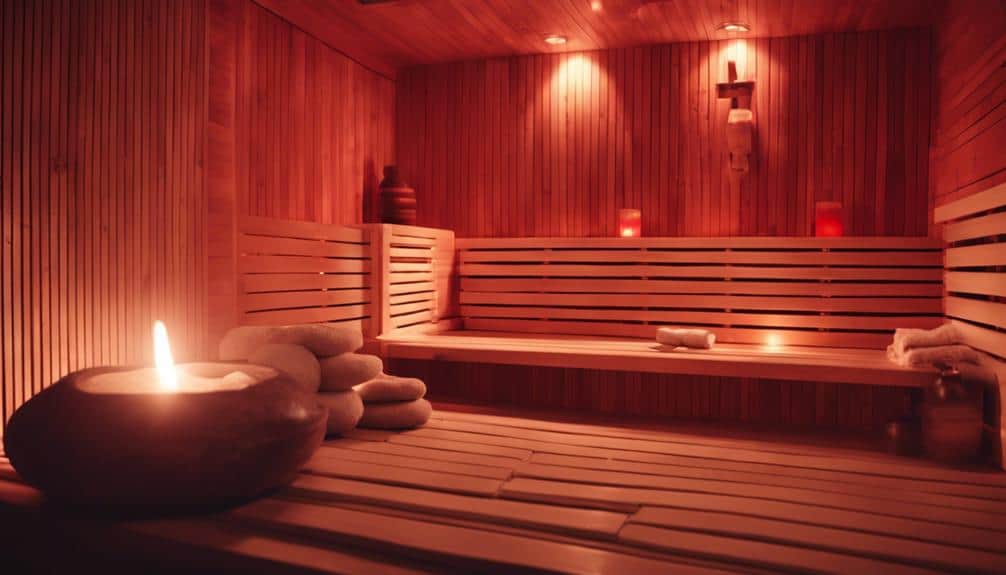
To determine the best sauna type for your needs, it's essential to consider whether a traditional or infrared sauna will align with your preferences and health goals. Traditional saunas, commonly found in gyms and spas, use hot rocks and steam to create a high-temperature environment ranging from 150-185°F. These saunas offer control over temperature and humidity levels, allowing for a more intense heat experience.
On the other hand, infrared saunas use infrared waves to directly heat the body at temperatures of 120-150°F. This type provides a gentler and more comfortable heat, making it suitable for individuals who are sensitive to high temperatures.
When it comes to health benefits, infrared saunas are known for their detoxification properties, improved circulation, stress relief, and skin cleansing. They can be an excellent choice for those prioritizing wellness and relaxation. Traditional saunas, on the other hand, are favored for their ability to provide a more traditional sauna experience with higher temperatures and steam.
In terms of energy consumption, infrared saunas are more efficient due to their direct body heating with infrared waves. Traditional saunas, however, require electric or wood-burning heaters and higher temperatures, resulting in higher energy consumption.
Ultimately, the choice between traditional and infrared saunas depends on personal preferences, health goals, and the desired sauna experience. Both types offer unique benefits and can contribute to overall wellness.
Materials Used
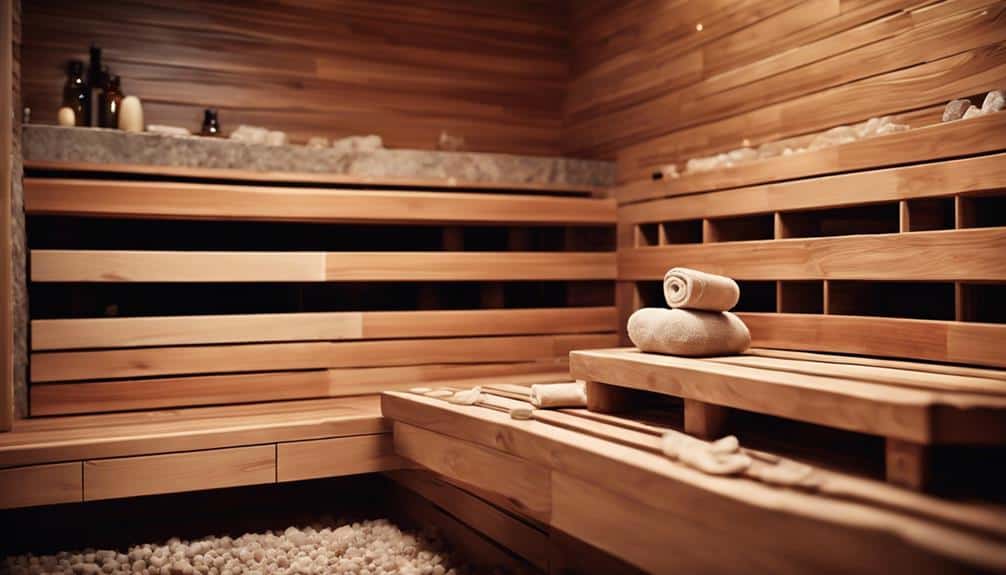
For a durable and eco-friendly sauna experience, it's crucial to carefully consider the materials used in the construction of your sauna. Here are three key factors to keep in mind when selecting sauna materials:
- Cedar and Hemlock: Choose sauna materials like cedar or hemlock for their exceptional durability and resistance to heat and moisture. These woods are known for their ability to withstand the high temperatures and humidity levels commonly found in saunas. Cedar is particularly popular due to its natural oils that repel insects and prevent rot, while hemlock offers a beautiful, light-colored appearance.
- Softwoods: Opt for softwoods that are chemical-free and sustainably grown. Softwoods such as cedar and hemlock are ideal choices as they're renewable resources and have a lower environmental impact compared to hardwoods. By selecting softwoods grown in sustainable forests, you can ensure an eco-friendly sauna experience.
- Kiln-Dried or Air-Dried: Look for sauna materials that have been kiln-dried or air-dried. This process helps minimize warping and maintains the structural integrity of the sauna. Kiln-dried wood is particularly effective in removing excess moisture, resulting in a more stable and long-lasting sauna.
In addition to durability and resistance, it's important to select sauna materials that meet safety standards. Ensure that the materials used, including glues and finishes, are non-toxic and comply with safety regulations.
Lastly, consider the aesthetic and aromatic properties of the wood. Cedar, for example, not only looks beautiful but also releases a pleasant aroma that enhances the overall sauna experience. By carefully considering the materials used in your sauna, you can create a safe, durable, and visually appealing space for relaxation and rejuvenation.
Additional Features and Accessories
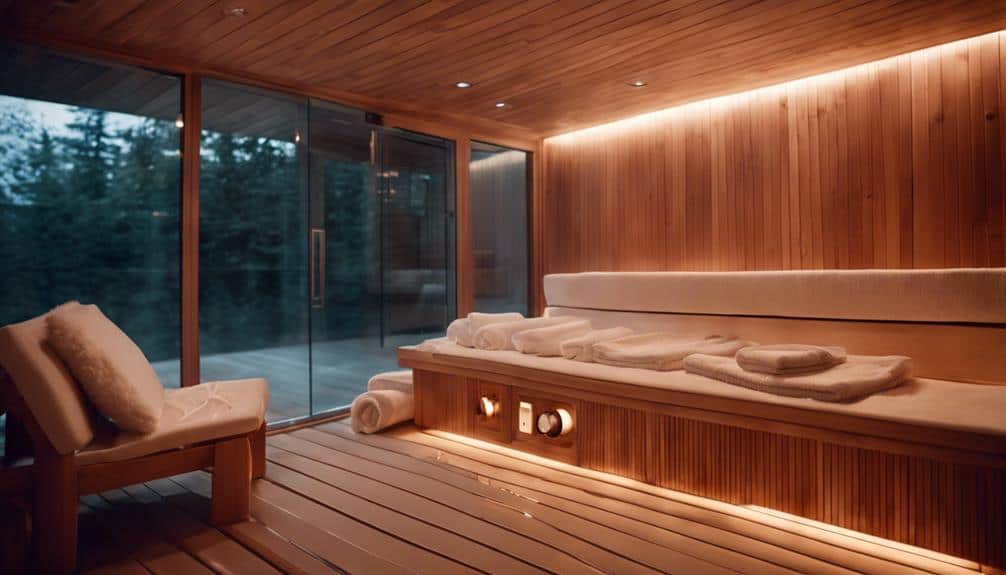
Consider incorporating additional features and accessories into your sauna to enhance your health benefits and overall relaxation experience. Saunas equipped with infrared technology provide a deeper and more penetrating heat, promoting detoxification and improved circulation. To further enhance your sauna experience, you may want to consider incorporating chromotherapy, which uses different colored lights to stimulate specific energy centers in the body, promoting balance and relaxation. Red light therapy is another feature to consider as it can help rejuvenate the skin, reduce inflammation, and promote healing.
For a more therapeutic experience, halotherapy can be added to your sauna. This involves the inhalation of salt-infused air, which can help with respiratory conditions and improve overall lung function.
When it comes to accessories, sauna buckets and ladles are essential for pouring water over the sauna rocks, creating steam and increasing the humidity. Thermometers are also important for monitoring the temperature inside the sauna, ensuring a safe and comfortable experience.
To enhance your relaxation, consider adding a built-in sound system or Bluetooth connectivity to your sauna. This allows you to listen to soothing music or guided meditations during your sessions. Additionally, aromatherapy diffusers or essential oils can create a fragrant and soothing atmosphere, further enhancing your sauna experience.
Frequently Asked Questions
What Is the Best Type of Sauna to Purchase?
The best type of sauna to purchase depends on individual preferences and needs. Factors to consider include the type of sauna (infrared or traditional), whether it's electric or wood fired, health benefits, materials, size, portability, energy efficiency, cost, accessories, and maintenance.
What Should I Look for in a Traditional Sauna?
When selecting a traditional sauna, I consider factors such as size options, heating technology, wood material, temperature control, ventilation system, bench design, lighting features, door options, maintenance requirements, and warranty coverage.
What Do I Need to Know Before Going to a Sauna?
Before going to a sauna, it's important to know the sauna benefits, health precautions, proper sauna etiquette, choosing the right temperature, how long to stay, hydration, safety tips, preparation, what to wear, and post-sauna care.
What Are the Design Requirements for a Sauna?
When selecting a sauna, I consider the optimal size, best wood choices for durability, the importance of fresh air ventilation, key insulation for heat retention, comfortable seating options, and creating a relaxing atmosphere with proper lighting.
Conclusion
After carefully considering the size and space requirements, heating method, sauna type, materials used, and additional features and accessories, it's crucial to choose a sauna that aligns with your preferences and needs.
By selecting a sauna that meets these factors, you can ensure a safe and relaxing experience. Remember to choose a trusted dealer for high-quality products and excellent customer service.
So, go ahead and indulge in the luxury of your own personal sauna retreat.

